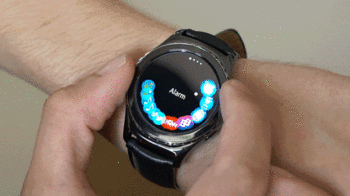
Like PCs, smartphones are also susceptible to being hacked and tracked by malicious people. However, how do I know if my cell phone is being hacked or tracked amid so many more refined scams?
Although in some cases the diagnosis is more difficult, it does not mean that there is no way to be protected. Observing some strange behaviors and adding extra protections can guarantee greater peace of mind for users.
Do you want to prevent your personal data from being compromised by malware , spyware or stalkerware ? Here are some tips on how to diagnose the problem and protect yourself.

Also Read : GBWhatsApp: alternative app that adds several features to the messenger is dangerous?
Table of Contents
1. Above average mobile data consumption
One of the most characteristic signs that your smartphone is being victimized by tracking apps is the sudden increase in data consumption . Since these programs work in the background, we don’t always realize they are running, but the data usage graph helps to clarify the problem.
If you notice a sudden increase in data usage, investigate which apps are responsible for this high consumption. It may be that we are facing a malfunctioning application (in this case, delete it and install it again), as it may also be that some malicious app is acting.
2. High battery consumption
In the same way that apps running in the background can consume more mobile data, they can also compromise your cell phone battery . However, caution is necessary: this is only a possibility, not a consequence.
The first thing to do is to look at the energy consumption graph and understand which apps are responsible for most of the spending. If there is something abnormal and its usage has not changed, start a scan with an antivirus program.
3. Messages of unknown origin with suspicious links
The ransomwares are applications that hijack data from a user in exchange for something – surrender values in bitcoins are the most popular request. Users contaminate their devices when they click on suspicious links, which arrive disguised as advertising via SMS or e-mail.
The most basic tip is to avoid clicking on unknown links every time. If this happens to you, be sure to do so with an active anti-malware application, as this reduces their chances of success. If your phone is receiving a lot of messages like this, there is a chance that it is infected.
4. Avoid installations via APK
If you are in the habit of installing apps via APK, that is, downloaded from sources external to the Play Store, know that there are more risks of your smartphone being “open” to receive malicious software. That’s because apps that don’t go through the official store don’t necessarily have to follow Google’s security rules.
If you have questions about the origin of the app – developers who can’t be found or who have a lot of complaints on the internet – uninstall the app. Still, it may be that the malicious files have hidden in other directories. An antivirus scan or even formatting are the best ways to solve the problem.
5. Noises during use
If during the phone calls you notice certain background noises, such as beeps or voices, it is possible that third parties are listening to your conversations.
Obviously, this is not a rule, but if you are going through this, you should not make it easy. Formatting the device can remove spyware once and for all.
6. Overheating
Finally, another “symptom” of infected cell phones is overheating. The operation of malicious apps in the background leads to increased consumption of data, energy and processing power.
When you activate heavier software, such as games with 3D graphics, the system may not be able to handle it, resulting in crashes and overheating. Before blaming your device’s hardware for problems like this, do a checkup with antivirus software to eliminate this possibility.
Also Read : Shortcut virus: How it works and How to remove it from the Computer


